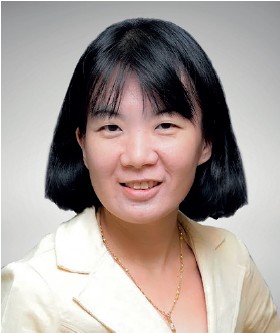Medical Specialist Distribution in a Large Private Hospital Network in Thailand
Main Article Content
Abstract
OBJECTIVES: This study describes the distribution of medical specialists in the largest private hospital network in Thailand.
MATERIAL AND METHODS: This study was conducted in a large private hospital network in Thailand. The database that contains demographics and clinical practice statistics of 9,909 medical doctors (MDs) who worked at 32 hospitals in 6 groups of the Bangkok Dusit Medical Services (BDMS) network in 2016. Data were collected using case record forms, then were analyzed using descriptive and inferential statistics.
RESULT: Of all 9,909 MDs analyzed, 57.49% were male, and the mean age was 40.20 General practitioners (GPs) comprised 15.53%. The proportion of specialists to GPs varied significantly statistically across network subgroups (p < 0.01), ranging from 96:4 to 83:17. Most specialists (74.22%) worked in urban areas.
CONCLUSION: The private hospital network in Thailand utilized many more medical specialists than GPs. An inequitable distribution of medical specialists can still be found in the private sector, despite more flexible human resource management than in the public sector.
Article Details
This is an open access article distributed under the terms of the Creative Commons Attribution Licence, which permits unrestricted use, distribution, and reproduction in any medium, provided the original work is properly cited.
References
Edwards ST, Mafi JN, Landon BE. Trends and quality of care in outpatient visits to generalist and specialist physicians delivering primary care in the United States, 1997-2010. J Gen Intern Med 2014;29(6):947-55.
Go AS, Rao RK, Dauterman KW, et al. A systematic review of the effects of physician specialty on the treatment of coronary disease and heart failure in the United States. Am J Med 2000;108(3):216-26.
Bateman A, Fonagy P. Mentalization based treatment for borderline personality disorder. World Psychiatry 2010;9(1):11-5.
Ayanian JZ, Guadagnoli E, McNeil BJ, et al. Treatment and outcomes of acute myocardial infarction among patients of cardiologists and generalist physicians. Arch Intern Med 1997;157(22):2570-6.
Chin MH, Friedmann PD, Cassel CK, et al. Differences in generalist and specialist physicians’ knowledge and use of angiotensin-converting enzyme inhibitors for congestive heart failure. J Gen Int Med 1997;12(9):523-30.
Jollis JG, DeLong ER, Peterson ED, et al. Outcome of acute myocardial infarction according to the specialty of the admitting physician. N Engl J Med 1996;335(25):1880-7.
Harrold LR, Field TS, Gurwitz JH. Knowledge, patterns of care, and outcomes of care for generalists and specialists. J Gen Intern Med. 1999;14(8):499-511.
Wibulpolprasert S, Pengpaibon P. Integrated strategies to tackle the inequitable distribution of doctors in Thailand: four decades of experience. Human Resources for Health. 2003 11/2510/15/received11/25/accepted;1:12.
Wibulpolprasert S, Pachanee C. Addressing the internal brain drain of medical doctors in Thailand: the story and lesson learned. Glob Soc Policy. 2008;8:12–5.
Kanchanachitra C, Lindelow M, Johnston T, et al. Human resources for health in southeast Asia: shortages, distributional challenges, and international trade in health services. Lancet 2011;377(9767):769-81.
Meyer GS, Cheng EY, Elting J. Differences between generalists and specialists in characteristics of patients receiving gastrointestinal procedures. J Gen Int Med 2000;15(3):188-94.
Mendez CM, Harrington DW, Christenson P, et al. Impact of hospital variables on case mix index as a marker of disease severity. Population Health Manage 2014;17(1):28-34.
Roter DL, Hall JA. Physician gender and patient-centered communication: a critical review of empirical research. Annu Rev Public Health 2004;25:497-519.
American College of Surgeons Health Policy Research Institute. The Surgical Workforce in the United States: Profile and Recent Trends. 2010 (Aceessed March 1, 2017, at cited 2017 at https://www.acshpri.org/documents/ACSH-PRI_Surgical_Workforce_in_US _apr2010.pdf ).
Onyemocho A, SonnyJohnbull O, Umar AA, et al. Prefer- ence for health provider¡ ̄s gender amongst women attend- ing obstetrics/ gynecology clinic, ABUTH, Zaria, North- western Nigeria. Am J Public Health Res 2014;2(1):21-6.
1Reid I. Patients’ preference for male or female breast surgeons: questionnaire study. BMJ 1998;317(7165):1051-60.
Schmittdiel J, Selby JV, Grumbach K, et al. Women’s provider preferences for basic gynecology care in a large health maintenance organization. J Womens Health Gend Based Med 1999;8(6):825-33.
Ahmad F, Gupta H, Rawlins J, et al. Preferences for gender of family physician among Canadian European-descent and South-Asian immigrant women. Fam Pract 2002;19(2):146-53.
Janssen SM, Lagro-Janssen AL. Physician’s gender, communication style, patient preferences and patient satisfaction in gynecology and obstetrics: a systematic review. Patient Educ Couns 2012;89(2):221-6.
Shamrani H. A cross-sectional survey of womens provider gender preferences for gynecology and obstetrics care at King Abdulaziz University Hospital. J Women’s Health Care 2016;5(6):1-7.
World Bank Organization. Urbanization in Thailand is dominated by the Bangkok urban area: The World Bank Group; 2010. (Aceessed March 1, 2017, at https://www.worldbank.org/en/news/feature/2015/01/26/urbanization-in-thailand-is-dominated-by-the-bangkok-urban-area ).
Kobayashi Y, Takaki H. Geographic distribution of physicians in Japan. Lancet 1992;340(8832):1391-3.
Toyabe S. Trend in geographic distribution of physicians in Japan. Int J Equity Health 2009;8:5.
Bangkok Dusit Medical Services. Annual Report 2016. (Aceessed March 20, 2017, at https://bdms.listedcompany.com/ar.html ).
Case Mix Index-1996-2015: chhs.data.ca.gov. (Aceessed March 1, 2017, at https://www.opendatanetwork.com/dataset/chhs.data.ca.gov/5pvx-hnf7


